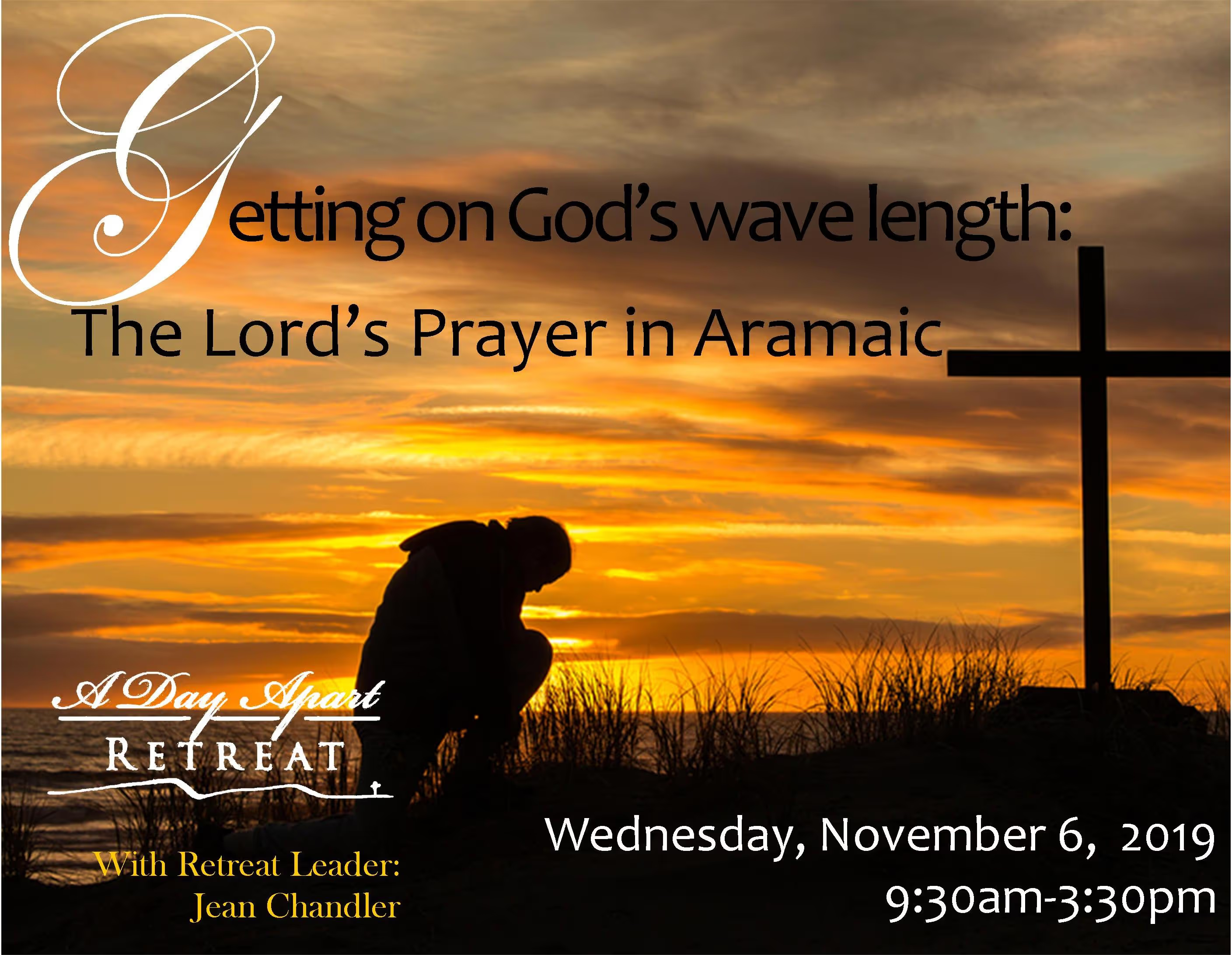October 21, 2019

What a difference a translation makes: A close translation of the Lord’s Prayer from Aramaic, the language that Jesus spoke, yields astonishingly fresh insights about the nature of divinity and heaven and clearing space for them to live in us.
Let’s just take, for example, the first line: Abwoon d’bwashmaya (Our Father who art in heaven). The prayer begins with the blessing that emanates from the divine creator. The ancient Middle Eastern root ab refers to all fruit, all germination proceeding from the source of Unity. This root came to be used in the Aramaic word for personal or spiritual father—abba, but its root does not specify a gender. It points beyond our concepts of male and female to a cosmic birthing process.
The word Abwoon has four parts to its sound-meaning: 1) a: the absolute, only being, pure oneness and unity, source of all power and stability, echoing the Aramaic word for God, Alaha, literally, the oneness; 2) bw: a birthing, creation, a flow of blessing, as if from the interior of this oneness to us; 3) oo: the breath or spirit that carries this flow, echoing the sound of breathing and including the forces we call magnetism, wind, electricity, and more. This sound is linked to the Aramaic phrase later translated as holy spirit; 4) n: the vibration of this creative breath from oneness as it touches and interpenetrates form. This sound echoes the earth, and the body vibrates as we intone the whole name slowly.
The rest of the phrase completes the motion of divine creation. The central root of d’bwashmaya is in the middle, shm. Shm may mean light, sound, vibration, breath, name or word. It indicates that which rises and shines in space. In this sense, one’s name includes one’s sound, vibration, or atmosphere, and the sign or name that renders Abwoon knowable is the entire universe. The ending aya shows that this shining includes every center of activity, every place we see, as well as the potential abilities of all things. So shmaya, the vibration or word by which we can recognize the oneness—God’s name—is the universe, and this is the Aramaic conception of heaven, the radiant vibration shining out through the entire universe.
Since Aramaic is a language of vibration, it’s especially important to intone it aloud. Prayer is a practice of attuning to the divine vibration, becoming one with the source of all creation. Hence I am calling this Day Apart “Getting on God’s Wavelength,”and we will be participating in what Neil Douglas-Klotz, a Sufi native speaker of Aramaic, calls in his book Prayers of the Cosmos “body prayers,” which encourage us to participate in the sound and feeling of the words as well as their intellectual or metaphorical meaning. Experiencing the words with our whole selves in what Douglas-Klotz calls a mystical or universal level of interpretation is important if we are to come close to the experience that Jesus’ audience would have had.
